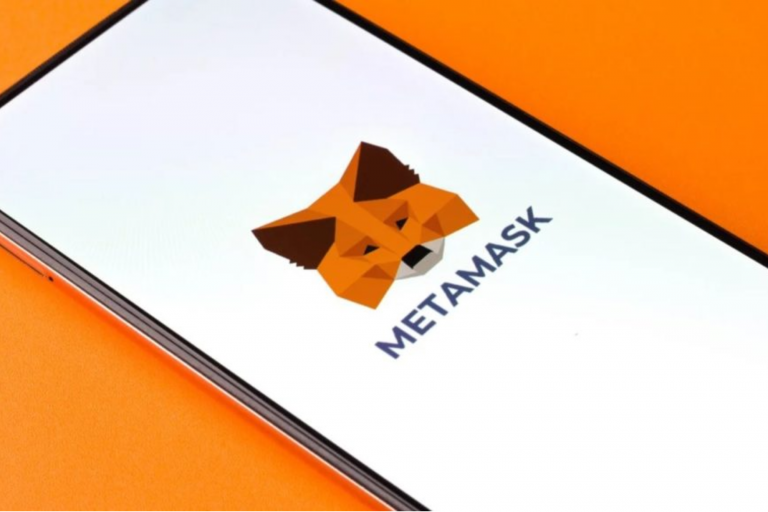
MetaMask, in collaboration with CompoSecure, Baanx, and Mastercard, launched the MetaMask Metal Payment Card, a premium, physical crypto debit card enabling tap-to-pay transactions directly from self-custody MetaMask wallets. The card eliminates the need for preloading funds or converting crypto to fiat before spending, with transactions authorized via smart contracts in under five seconds on the Linea network, an Ethereum-based zkEVM blockchain. Supported tokens include USDC, aUSDC, USDT, WETH, EURe, and GBPe.
The card is set for a global rollout in Q2 2025, with early access available in Argentina, Brazil, Colombia, the EEA, Mexico, Switzerland, the UK, and the US (excluding New York and Vermont). A limited-edition Metal Card offers premium rewards and exclusive perks. This partnership aims to bridge Web2 and Web3, making crypto spending seamless and secure.
By enabling direct tap-to-pay transactions from self-custody wallets, the card lowers barriers to using cryptocurrency for everyday purchases, potentially driving broader acceptance among merchants and consumers. Unlike traditional crypto cards requiring preloaded funds or third-party custodians, this card maintains user control over assets via smart contracts, reinforcing the ethos of decentralization and financial sovereignty.
Register for Tekedia Mini-MBA edition 19 (Feb 9 – May 2, 2026): big discounts for early bird.
Tekedia AI in Business Masterclass opens registrations.
Join Tekedia Capital Syndicate and co-invest in great global startups.
Register for Tekedia AI Lab: From Technical Design to Deployment (next edition begins Jan 24 2026).
The integration with Mastercard and support for instant crypto-to-fiat conversion at point-of-sale creates a seamless link between traditional finance and blockchain, making crypto more accessible to non-technical users. The global rollout, starting in key regions like the EEA, UK, and Latin America, targets diverse markets, potentially increasing crypto usage in regions with high unbanked populations or inflationary currencies.
Utilizing the Linea network for fast, low-cost transactions highlights the growing importance of Ethereum’s Layer 2 solutions, which could drive further development and adoption of zkEVM technology. As crypto cards gain traction, regulators may impose stricter oversight on transactions to prevent money laundering or tax evasion, especially in jurisdictions like the US, where certain states are excluded.
The card positions MetaMask as a direct competitor to other crypto debit card providers (e.g., Coinbase, Crypto.com), potentially spurring innovation and better offerings in the space. While self-custody enhances user control, the reliance on smart contracts and real-time conversions could raise concerns about transaction privacy or vulnerabilities in wallet security.
This card could accelerate crypto’s integration into daily financial systems, but its success will depend on user adoption, merchant acceptance, and navigating regulatory landscapes. The launch of the MetaMask Metal Payment Card highlights and potentially widens the divide between different groups in the crypto and financial ecosystems. Here’s
Web2 vs Web3 Users
The card bridges traditional finance (Web2) with decentralized crypto (Web3), but its appeal may be limited to crypto-savvy users comfortable with self-custody wallets. Mainstream consumers accustomed to conventional debit cards may find the setup (e.g., managing private keys, understanding supported tokens) daunting. While the card aims to onboard Web2 users, the learning curve could slow adoption, reinforcing a gap between early adopters and the broader public. Education and user-friendly interfaces will be critical to closing this divide.
Crypto Enthusiasts vs Traditional Finance
Crypto purists who prioritize decentralization may embrace the card’s self-custody model, while traditional finance users may be skeptical of crypto’s volatility and regulatory uncertainties. Conversely, some crypto users might distrust the card’s reliance on Mastercard, a centralized entity. This tension could limit the card’s appeal to a niche audience unless MetaMask balances decentralization with mainstream trust. Partnerships with established players like Mastercard may help legitimize crypto but risk alienating ideological purists.
Developed vs Emerging Markets
The card’s initial rollout targets regions like the EEA, UK, and parts of Latin America, but exclusions (e.g., New York, Vermont) and limited token support (e.g., USDC, EURe) may restrict its utility in certain markets. Emerging economies with high crypto adoption (e.g., Argentina, Brazil) could benefit more due to currency instability, while developed markets may see slower uptake due to robust fiat systems. The card could deepen financial inclusion in emerging markets but risks creating uneven adoption, where underserved regions leapfrog to crypto while developed markets lag, potentially exacerbating global financial disparities.
Tech-Savvy vs Non-Technical Users
Managing a MetaMask wallet and understanding smart contract transactions require technical knowledge, alienating non-technical users. The card’s premium branding (e.g., Metal Card rewards) may also cater to affluent, tech-savvy early adopters rather than the average consumer. This divide could create an elite user base, limiting mass adoption. Simplifying onboarding and offering robust support will be essential to make the card accessible to a wider audience.
The card’s availability in select regions (e.g., excluding certain US states) reflects regulatory hurdles. Jurisdictions with clear crypto regulations (e.g., EEA, UK) enable faster adoption, while restrictive or unclear policies (e.g., parts of the US) create barriers. This regulatory patchwork could fragment the card’s global impact, favoring regions with progressive policies and leaving others behind. It may also push MetaMask to prioritize compliant markets, potentially neglecting high-potential but unregulated regions.
Self-custody appeals to privacy-focused users, but real-time crypto-to-fiat conversions and Mastercard’s involvement may raise concerns about transaction traceability. Mainstream users prioritizing convenience may overlook privacy trade-offs, creating a split in user priorities. MetaMask must navigate this divide by offering robust privacy assurances without sacrificing usability. Failure to do so could alienate privacy advocates or deter mainstream users if security incidents arise.
The MetaMask Metal Payment Card has the potential to narrow some divides (e.g., Web2-Web3 integration, financial inclusion in emerging markets) by making crypto spending practical and accessible. However, it risks widening others (e.g., technical vs. non-technical users, regulatory disparities) if adoption remains confined to specific demographics or regions. The card’s success in bridging these divides will depend on:



